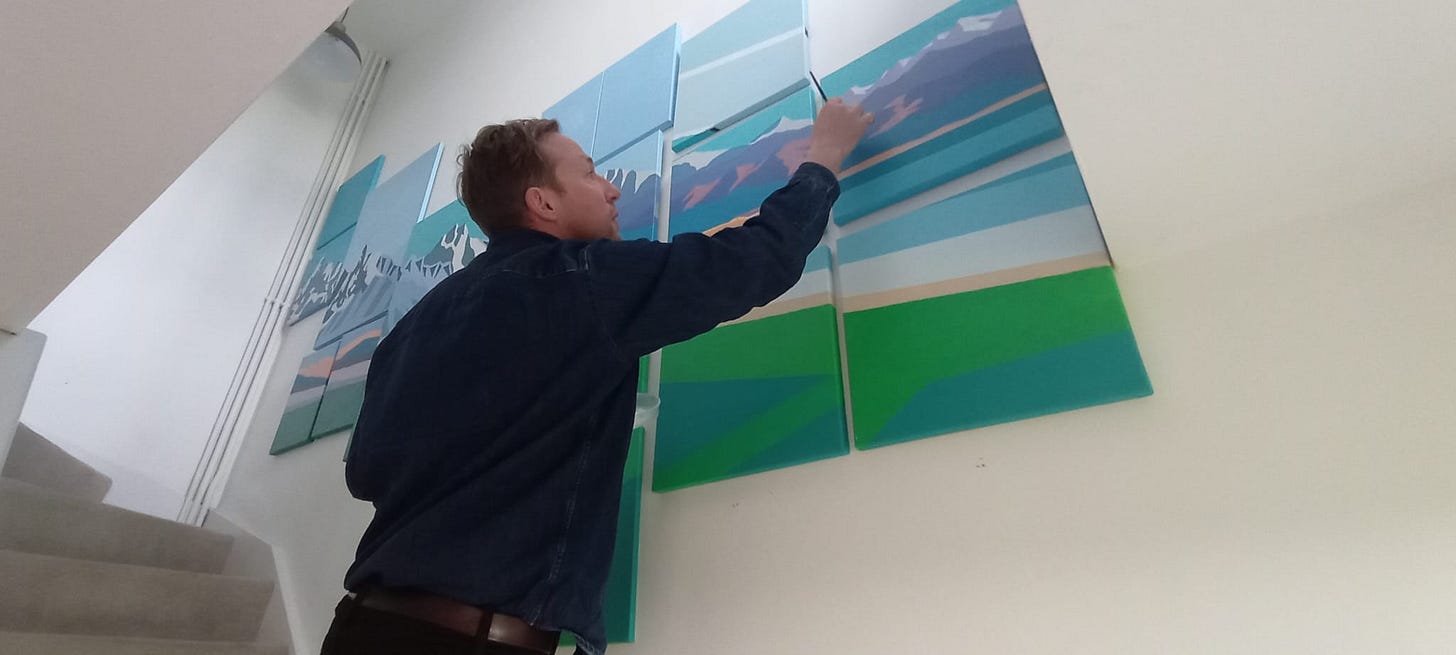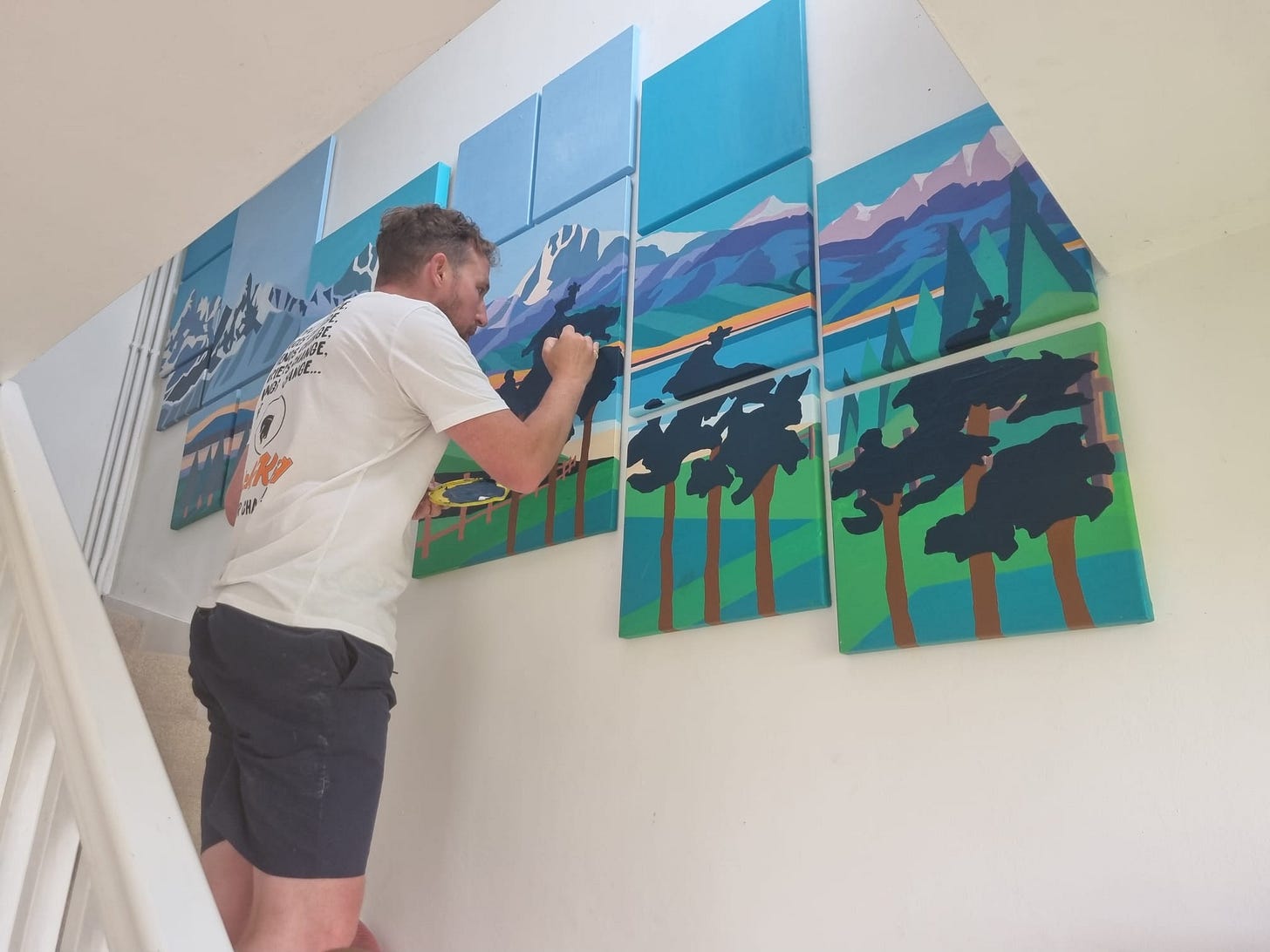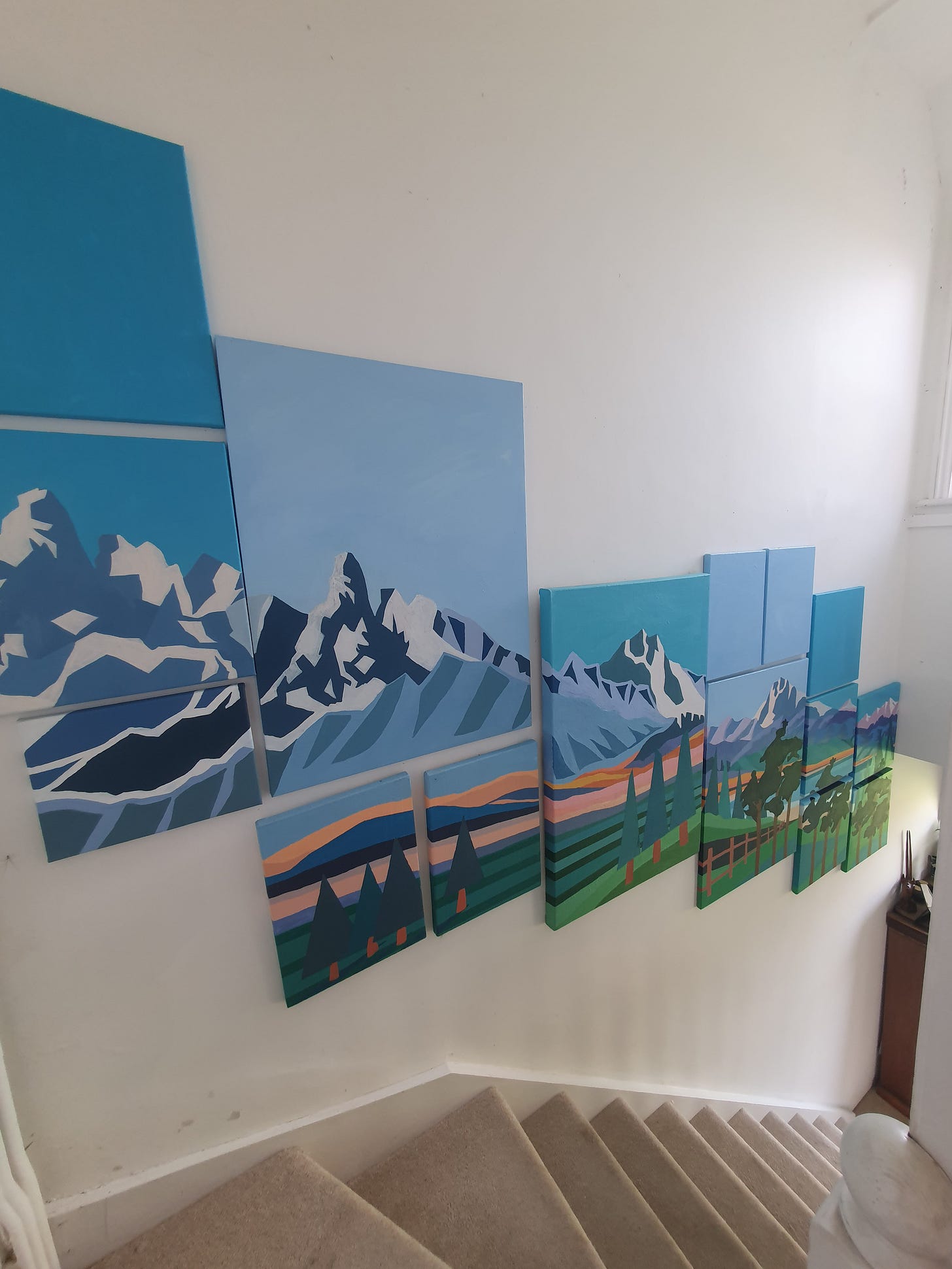Paintings that invite you to look where you like.
This year I’ve discovered a new way of painting.
I first bumped into at the start of the year.
I was working on a commissioned painting of the view from Richmond Hill.
The painting turned out wonderfully and yet it was different to other paintings I’ve done.
It was different because it didn’t have a clear focal point.
Focal points are the elements in a painting that draw your eye. They’re normally things like buildings, faces, mountains, etc.
If like me, you’ve enjoyed the view from Richmond Hill, you’ll appreciate it doesn’t have a natural focal point. When you’re looking out from that view, your gaze doesn’t fix or focus. Instead, it darts back and forth across an expansive and generous landscape.
This is the finished painting:
Notice how the painting doesn’t ask or invite you to look at a specific point.
Instead, the painting invites you to ‘look where you like’.
That’s why I was so chuffed with it: the painting captures what it’s like to look out from that view. It’s not fixed, focused or singular. Instead it’s expansive, generous and invitational.
You are invited to look where you like.
---
Focal points re-emerged as a theme later in the year.
In the Spring I gave myself a sizeable creative challenge.
Our stairwell at home was big and empty and I wanted a landscape painting to fill it.
As I was planning the painting, I wasn’t so interested in what landscape I would paint. I was more interested in how the painting would work: its structure and mechanics.
In my early sketches, I was trying to figure out how a landscape could flow seamlessly from the top of the stairs to the bottom and back again.
I wasn’t yet using the language of ‘focal points’, but I instinctively knew the stairwell painting wouldn’t work if it had one, singular focal point.
That would look weird. It would force people to look towards a very specific part of the stairwell, which would interrupt the natural flow I wanted to create.
I wanted the painting to work just as well from the top of the stairs as at the bottom, and every step in between.
So, over the course of a few months, I developed a 15-canvas painting.
It was an imagined landscape, with no singular focal point.
And here it is, finished.
The theme of focal points emerged for me again this week… in a Tottenham podcast of all places!
The podcasters had watched a recent Tottenham game on TV and were complaining about the footage. In particular, how slow the broadcaster had been to return to live footage having cut away to action replays.
As I listened to their complaints, I realised their complaint was about focal points.
When you watch football (or pretty much anything) on TV, you have no choices. You have to accept and watch the ‘focal point’ of the game that a broadcaster decides for you.
I was in the stadium for that game and I had no such complaint.
In fact, none of the 60,000 spectators had that particular complaint.
That’s because in the stadium we aren’t obliged to look at one, fixed, focal point.
Instead, we are invited to look where we like.
At any moment we are free to scan around the stadium, the crowd and the pitch.
I realised that the stadium experience was much like that view from Richmond Hill or the new stairwell painting at home.
And then I had an idea.
Has anyone done a multi-canvas landscape painting of a football stadium?
One without a singular focal point?
What would that look like?
A Reminder about Bravery
Regular readers will know that I do my best to finish each newsletter with some creative writing.
This week, I’m sharing a line I wrote in my notebook a few months ago.
I was about to start a new project and I was feeling a lot of fear about it.
So I sat myself down and wrote myself a pep talk.
In a lot of garble, I wrote this one sentence that has stuck with me.
It’s a reminder to myself to be brave, and I offer it here in that spirit.
If you spend all your time checking for leaks, you might forget to sail your boat.
Thank you!
I hope you’ve enjoyed the newsletter - thank you for reading.
If you’d like to work with me on a painting or commission, please feel free to contact me via my website, here.
If you haven’t already, you can subscribe to this newsletter here:
And if you’ve enjoyed the read, please feel free to share this newsletter with a friend or two. You can do so here:
Thanks again for reading.











